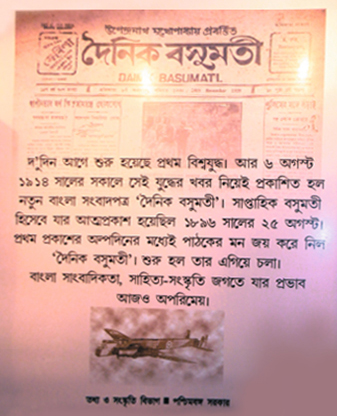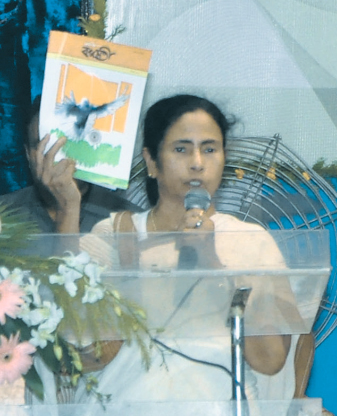About Basumati
History of Basumati Sahitya Mandir
Pre-Independence

Basumati Sahitya Mandir was established in 1881 by Late Upendra Nath Mukherjee.
Upendra Nath was a close devotee and disciple of Sri Ramkrishna Paramhansadev. Later he came in closed contact of Swami Vivekananda.
A number of Patrikas were published from this building—
- Bharatbarsha
- Prabashi
- Bichitra
- Kisholay Patrika and Basumati (Weekly, Dainik, Fortnightly and Masik Patrika) alongside several rare Publications and Books written by various eminent personalities.
On 6 August, 1914, immediately on the eve of First world war ‘Dainik’ Basumati Patrika was launched to fulfil the curiosity of people about the war and the news of social and economic problems of the common men. “Nomo Naranarayan –Service for People “—This written by Swami Vivekananda was always printed on the upper side of editorial page of this Dainik Patrika.

Masik Basumati was first published in 1922.
Basumati was the first Indian language patrika among the Asian Countries to use the rotary machine and also the first to become the subscriber of Reuter and Associated press.
In 1921 Mahatma Gandhi visited the Office of the Patrika and praised it for creating awareness among the youth against the British Government Rule. It also played an important role during the Satyagraha Movement of Mahatma Gandhi in 1929.
Number of Spiritual and National Leaders were associated with this Patrika. Notable amongest them were— Aurobindo Ghosh, Chittaranjan Das, Barin Kumar Ghosh, Upendranath Bandyopadhyaya, Sarat Chandra Basu, Netaji Subhas Chandra Basu, Sarojini Naidu among others.
In 1950, Barin Ghosh became the editor of Dainik Basumati for a considerable period of time.
The popularity and demand of this Patrika reached sky-high during the British regime. The British Government was reluctant to supply the required newsprint and even threatened to stop the publication for criticizing the Government.
An English Telegram patrika was also published in 1941 from this office.
Post-Independence
After Independence, the financial condition of the Patrika began to deteriorate gradually and Basumati ran into internal problems and had to close down its Office in 1961.
The former Central Law Minister Sri Asok Kumar Sen acquired the ownership of the office during this period. He reopened it again as “Basumati Private Limited”.

Eminent Journalist Sri Vivekananda Mukherjee became the Editor of Dainik Basumati in 1962. Demand and circulation once again began to rise. During the food movement (1962-68) under the editorship of Vivekananda Mukherjee, Basumati Patrika played a memorable role which readers still do remember.
In 1974, Govt of West Bengal took over the ownership of Basumati office and became Basumati Corporation Limited.
Besides daily newspaper, printing of large-scale jobs, execution of works of various Departments of Government were also introduced. Circulation of Newspaper began to rise.

In 1992, a new branch was opened in Siliguri and Basumati Patrika ceased to be published from Kolkata office. Later in 2003, the Siliguri Edition was also closed down.
Basumati Sahitya Mandir has been recognized as an Heritage Building by Kolkata Municipal Corporation.
With the continuous support from the state government, Publication of 'Masik' Basumati Magazine revived again from 2012.
Works of Reprinting and publication of rare Publication books also started.
Saradiya Basumati is being published regularly on the eve of Durga Puja.
Hon'ble Chief Minister, Mamata Banerjee enriched 'Saradiya Basumati' with her painting and literary works and constantly inspired for improvement.
Initiative of proper digitization of all the publications of Basumati Private Ltd in 2 phases and C-DAC has been entrusted for this purpose.